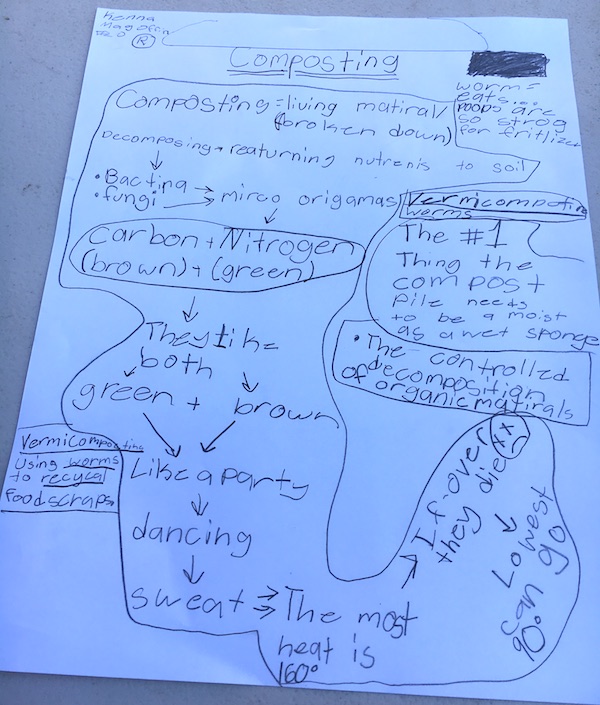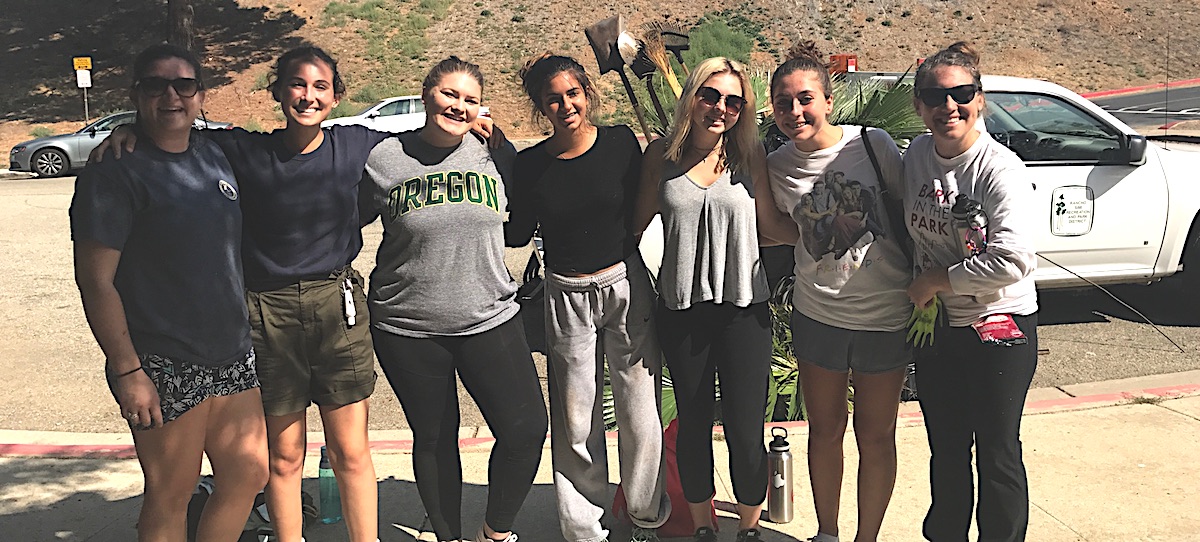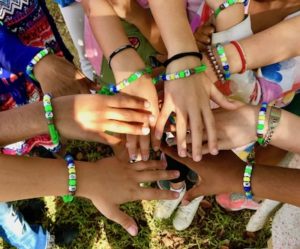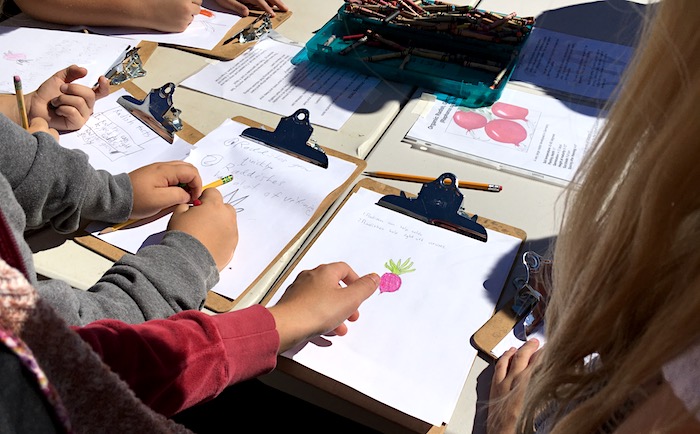An Interview with Tony Knight, Ed.D.
Tony Knight has served as a public school teacher and administrator for 38 years. The Oak Park School District, under his leadership, was named the first U.S. Green Ribbon School District in California. He is a scuba diver, underwater photographer and sailor and serves on the NOAA Channel Islands National Martine Sanctuary Advisory Council.
You’ve been a sustainability advocate for decades-how did that start?
I think it’s an evolutionary process.
I have always been an environmentally focused person. I learned a lot about it in high school. I had teachers in my science classes, in oceanography and ecology and biology who helped me understand the mechanisms. This was in the 1970s when this was becoming an issue. Then when I was in college, I remember taking courses on sustainability. This is the late 1970s and this was the big topic because of the energy crisis.
I read Barry Commoner; I don’t know if you remember him. I was able to get sort of an intellectual arm around the whole thing, which I think was important. When I came to education, I always kept it in mind, but never really thought much about it because I was mostly teaching in history and social science and it really wasn’t part of the curriculum.
But then when I became a principal of an elementary school, I had several parents who were very environmentally focused. We worked together to develop some practices at the school that we thought would be important to impart to students. We started focusing on zero-waste lunches and waste reduction and it kept spiraling from there until the superintendent asked me to head up an environmental committee for the whole district. I did that, and got parents from the other schools involved.
We had a really great time because we had free reign. It was new-nobody was doing anything really. We looked at practices other schools had developed and came up with ideas on how to improve things.
I had a parent who got involved with the county to get a recycling center going in the school district and the for the community. Things like curbside pick-up were just starting to be rolled out in various cities in California at that time, and the district became a leader because we were filling a vacuum. As I advanced in the school district and became superintendent, the board wanted us to make sure we continued these efforts, so we’ve been able to constantly improve and change as needed and to do all kinds of interesting things.
What are some examples of programs or projects that you are really proud of, that did what you hoped they would do or even went beyond what you would have hoped?
The no-waste lunch program at our elementary school and a pretty intensive recycling program that we started was huge. We went from eight barrels of garbage a day to one. That got a lot of attention for the school and we showed how much money that saved in garbage collection and waste. It was hard for people to argue with that.
The latest effort is solar power. Today 85 to 90 percent of all of our electricity is generated by solar power, through systems that we installed with our bond money. We just opened those up on July 1st and they’re saving us a lot of money every month. They are generating green power in schools and the students are learning about it. It’s really exciting.
There are beautiful, beautiful structures at every one of the schools. They’re not on the roof. They’re in shade structures and they’re quite prominent and visible. We did a ribbon cutting for every school and we had lots of people from the community and politicians and legislators coming. It was really great in that we talked to the kids about how all of their schools are powered by the sun like spacecraft, and how that works. This is a big thing.
Another thing is our food service program. We serve a much more sustainable menu in our food services program than in the past. It’s mostly plant-based and what isn’t plant-based is poultry. The vegetables we serve are all non-GMO and most are organic. We have really strict requirements for our food. It needs to be what is called “clean food,” without additives. We know we’re helping the environment by eliminating some of those things in the way food is grown and produced.
We have a food composting program in which our food scraps are picked up and reclaimed. It’s part of the Green Ways program in Ventura county. We have installed bioswales at the schools, so that when the rainwater runs through the parking lot it goes through a bioswale and is filtered into the groundwater via a percolation system.
Another huge accomplishment was the first installation of the GrowthPoint classrooms in the United States. Those were all made out of shipping containers. We have seven of those at our high school, and they’re prominent classrooms right in the middle of campus. We are now in the process of adding more at our other schools to replace aging portable classrooms that are not very efficient. We’ve just begun the process with our architects.
 We’ve added drought-tolerant landscaping all over the place and planted 900 trees. We have a maintenance contract with a tree company to care for every single one of them. The whole district has become an arboretum and a carbon sink.
We’ve added drought-tolerant landscaping all over the place and planted 900 trees. We have a maintenance contract with a tree company to care for every single one of them. The whole district has become an arboretum and a carbon sink.
We’ve changed out every single light in the school district to an LED light. We’re very careful about the sustainability of the furniture that we buy. We’ve changed out all of our thermostats and we’re changing out our air conditioners to the most efficient ones that we can get.
We have the most progressive IPM (integrated pest management) and rodent prevent management program in the state, I believe. And that, we don’t use rodenticides because of our location in the Chaparral area. We’ve always used organic fertilizers on our grass and plants. We don’t use synthetics. We don’t use herbicides.
We stopped using the herbicide Glyphosate, or Round-Up, about 10 years ago. Now the World Health Organization is talking about how dangerous it is for children to be exposed to it. I’m super happy that our kids have never been exposed to that in our schools. Most school districts can’t say that-those things are still allowed to be used.
We keep our eye out. We listen to parents and other advocates in the field and people who are interested and concerned. We have a lot of open discussions about the environmental things that we do in our school district. Everything that we do, we check, “Okay. Now, we’re going to replace the carpeting. Is this the best one to use? Does it have the lowest VOC number that we can get?”
We’ve installed cool roof systems. Every time we replace a roof, it’s a cool, white roof.
We just keep going.
It could be the case for a number of students that school is the first place they could experience sustainable practices. Do you think that the district is obligated to model these things as part of its educational mission?
I absolutely do. That’s one of the reasons we do this, just like any company should do the things that we’re doing. That’s important, it’s exponentially more important in the school district because you’re modeling these things in front of young people. If we have any chance in the future of curtailing climate change and greenhouse gas emissions and addressing environmental issues, it’s going to be through our schools.
All the prominent people in the field—from Sylvia Earle to Jane Goodall to Jean-Michel Cousteau and many others—talk about how important it is to make sure our young people embrace these concepts and understand them from a scientific point of view and from an advocacy point of view. Our schools have an obligation, I believe, to do this.

How have you seen the green school movement in California change or develop over the years?
I think that school districts have had other priorities and have kept this on the sideline, but I am noticing that more school districts seem interested in pursuing the Green Ribbon School Awards and those kinds of recognitions.
I also think that there are more school districts that are doing things to save money. If they have bond money, and there’s a lot of that running around the state right now, then they’re looking at more sustainable building practices to see if they can save general fund money. That’s a huge incentive for us, because there’s never enough of it. I think that more school districts tend to be looking in that direction, and they want to tout it a bit more. They want to talk about it and write about it.
Another thing we’re proud of is our school garden program. We have a garden specialist that works with students to help them grow their own organic food and to understand sustainable gardening. I’m seeing more of that happening in different school districts; it’s a trend to try to grow some of your own food on campus. Teachers and educators are seeing the benefit of that for kids in regard to their attitude at school and enjoyment of the school day.
Do you still encounter people in leadership roles at schools who do not necessarily seeing going green as a core priority?
 I’ll give you an example. I am a member of the Environmental Literacy Steering Committee, an operation through the California Department of Education and Ten Strands. It’s a pretty prominent group of people and it’s got a pretty prominent mission. At my suggestion, we tried to make a presentation at the California School Boards Association Conference this year. The proposal was rejected. I found it shocking that the CSBA found it to be not worthy of the conference. We are presenting at the state STEM conference.
I’ll give you an example. I am a member of the Environmental Literacy Steering Committee, an operation through the California Department of Education and Ten Strands. It’s a pretty prominent group of people and it’s got a pretty prominent mission. At my suggestion, we tried to make a presentation at the California School Boards Association Conference this year. The proposal was rejected. I found it shocking that the CSBA found it to be not worthy of the conference. We are presenting at the state STEM conference.
I think there are still people look at sustainability and say, “Oh, well, the bigger issues are equity and social justice,” or whatever it happens to be, even though this work is completely related to all of those things.
I’m disappointed, but it’s more of a challenge. As we implement the Next Generation Science Standards in California, environmental concepts are built into them. Teachers are going to need to become more aware of them and I think school districts will miss the boat if they only educate about them. If kids are going to schools that are not environmentally friendly, or could be more so, there’s going to be a disconnect.
How would you like to see environmental education evolve?
I’d like to see the Environmental Principles and Concepts end up on the State science test at multiple grade levels, and to hold schools accountable for making sure students learn them. Now, that sounds a bit heavy-handed, but I think it’s important. If something is not tested, then it doesn’t really come across as very important for school districts to focus on it.
If it’s in the standards, then it needs to be taught and it needs to be tested. I don’t think it should be one of those optional things that only gets attention from schools in Marin County or the South Bay. Everybody needs to be focusing on it, because it affects everybody, and not just in California, but everyplace else.
I’d like to see the state incentivize school districts more by offering financial incentives for green practices. There are very few of those right now, except for Prop 39. I’ve said for years that there should be some kind of a solar program. Rather than leaving school districts to do this on our own, the state could loan the school districts money for projects, and let us pay it back at zero interest, or at small amount of interest, out of the state bond fund or another source.
There’s nothing like that in California right now on a statewide level. For example, we received less than $1 million from the Prop 39 fund, but our solar projects cost $7 million. Luckily, we had passed a bond with this intention, so we spent $7 million in cash to buy these systems to save money in our general fund. If the state had a program where they would loan us $7 million and let us pay them back rather than paying the utility, it would be a win-win for our climate action goals and for helping school districts to improve their funding levels.
Increasingly, even some people who are optimistic about our ability to preserve natural resources are raising red flags. How important are schools to whether we make it or not?
 I think they are incredibly important. This is a huge crisis that our whole world is dealing with and we are still tinkering around the edges with some of these things. I hate to use the word “painful,” but I think we’re going to have to make some painful sacrifices, potentially, in dealing with them.
I think they are incredibly important. This is a huge crisis that our whole world is dealing with and we are still tinkering around the edges with some of these things. I hate to use the word “painful,” but I think we’re going to have to make some painful sacrifices, potentially, in dealing with them.
It’s difficult with industry and workers worrying about jobs and cities and counties worrying about loss of tax revenue because of loss of those jobs. We keep thinking of this as a negative instead of as a positive.
How much money is being spent on these disasters that could be avoided? How many new jobs could be created with renewables and other kinds of projects if we focused on those kinds of things? We are suffering from small-mindedness on this issue, and it’s typical of human nature. It’s part of our evolutionary DNA to deal with issues that are right in front of us rather than thinking long-term. Humans have never been good at that.
Governments also have a really bad record of having very short-term memories and doing things that are very short-term and very expedient, to benefit people immediately. I don’t know if we’re capable of thinking long-term as a species, as a country, or even as a state. In California, we are trying really hard. I commend Governor Brown and the legislature for the work they have been doing – but it’s a rough battle, man!
If California wants to be a leader in this area, then it’s going to have to come through the schools more than by imposing laws and mandates. Incentivization at the school level through our new curriculum, through the common core, etc. is a more effective way of getting kids to embrace sustainability, helping them to ask the right questions and to model it in their lifestyles.
I can’t say, “Well, the reason that Oak Park is one of the highest-achieving schools in California is because of our environmental programs.” I can’t make that link, necessarily, but it’s part of it, along with a lot of other things that we do. It comes together with school districts developing what we call a climate of care. We care about our kids and the world that they live in, and about their futures, so we are careful and deliberate in our practices and the way we educate them.
I did a little bit of research recently regarding how environmental education affects students and learning. There seems to be a consensus that schools that are focused on the environment and on getting kids involved with nature see higher student achievement, less student stress and more engagement.
Those are beautiful byproducts in themselves. We’ve certainly seen them in Oak Park.
Thank you

